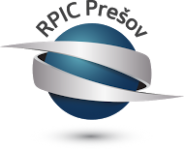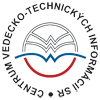Summary:
A team of inventors from an established Slovak scientific and research institute has developed a novel large area detector of low-activity radiation. Its construction enables the use of lower quality input semiconductor for production, which expands the application possibilities and at the same time allows a more accurate measurement result, while also reducing the amount of control electronics.
The preferred cooperation type is license agreement.
Description:
When measuring radiation with very low intensity, it is important that the detector has the largest possible detection area and the largest possible volume. The larger the area and volume of the detector, the more particles are captured and the faster the necessary data is obtained. On the other hand, with increasing area and volume of the detector, the noise also increases, which considerably limits the use of the detector.
The quality of the detector depends very much on the quality (purity) of the semiconductor substrate. The concentration of admixtures should not be higher than 1x1014 cm-3. The admixtures cause defects, which degrade the parameters of the resulting detector and, in the case of spiral dislocations, degrade its properties so that it is unusable if these dislocations are located in the area below the electrode.
Typically, Si or Ge is used as the semiconductor material. It has a high purity, which, however, corresponds to a high price.
Also, these materials are not preferred in all areas. There is an increasing effort to use detectors based on other semiconductor materials. These are in particular semiconductor compounds such as GaAs, CdTe, CdZnTe, SiC, InP, etc. However, the purity characteristics of these materials are worse than those of Si or Ge. Local defects in such active layers reach values of up to 104 per cm2. In this case, therefore, it is not possible to prepare large area detectors in a conventional manner, i.e. by applying one active electrode to the semiconductor substrate. The larger the area of the active electrode, the greater the probability that there will be local defects below it in the active layer, which will cause the degradation of the detector properties to the extent that the detector will be practically unusable. In addition, with increasing electrode area, basic detector parameters such as energy resolution, total noise, stability and also overall production yield are degraded.
At present, this problem is solved by dividing the large area electrode into small pixels (usually hundreds of µm), each pixel of which is connected to the reading electronics. Finally, a circuit is made that adds all the signals together. In this way, a relatively large detector can be made. However, since each pixel must have control electronics, this increases the cost as well as the power requirements. This approach is also expensive and not always appropriate. At the same time, it has the disadvantage regarding the accuracy of measurement. Individual pixels cannot be detached. So, if the semiconductor has defects, then a high current flows through the pixel in the defective area, which also affects the neighboring pixels and their output signals. Also, the direct connection of the reading chip to the detection part of the semiconductor causes direct heat transfer from the reading chip to the detection part. Increasing the temperature of the semiconductor detector deteriorates its spectrometric properties, and therefore it is necessary to consider also the possibilities of cooling of the entire detection system, which increases not only the price but also the overall complexity.
A team of inventors from an established Slovak scientific and research institute has developed an innovative large area detector, which is less complicated, affordable, has higher yield, better parameters compared to state of the art detectors, and which has extended application possibilities, especially in the case of lower quality of the active layer of the semiconductor substrate. The design of the large area detector makes it possible to exclude from the overall connection the areas under which the defects are located in the substrate.
The total area of the active electrode is up to 100 cm2.
The preferred type of cooperation is license agreement. More details specified in the Partner Sought.
Type (e.g. company, R&D institution…), field of industry and Role of Partner Sought:
Field:
The large area radiation detector can be used in nuclear energetics (spectrometry, dosimetry) or wherever there are sources of ionizing radiation of natural or artificial nature. The large area detector can also be used in space applications.
Role of a partner:
The proprietor of the technology is looking for an industrial partner for licensing the technology.
Stage of Development:
Prototype available for demonstration
IPR Status:
Patent(s) applied for but not yet granted
External code:
TOSK20210513002








